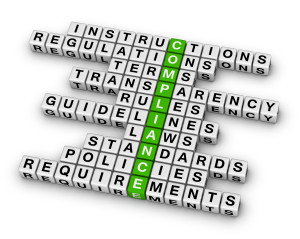Welcome to your first edition of Monday Muni Minutes (MMM). We are so excited you joined us and can’t wait to chat with you about “all things post issuance compliance”!
As your time is valuable, our goal is to keep Monday Muni Minutes brief and informative – something you can easily read while taking a break with a cup of coffee or tea – in about 5 minutes.
MMM is divided into three sections: Current Events (news), Out and About (helpful trainings/webinars/guest articles) and Solving the Compliance Puzzle (part of a 10-week learning series).
Enjoy! Debbie
P.S. We’d love to hear from you…so please drop us a comment after reading today’s issue!
CURRENT EVENTS
Today is the day before the big day.
Tomorrow, underwriters need to determine whether or not to self-report to the SEC regarding “material missteps” as required under the MCDC Initiative. Last week, a bipartisan House threatened the SEC to extend the underwriters’ September 9th reporting deadline…or stated they would step in with legislative action, requesting a response by September 5th.
The rationalization behind the House’s efforts is to make the SEC aware that the underwriters aren’t feeling they have enough time to effectively report potential violations by the September deadline, and would like an extension to comply similar to what was granted to the issuers/borrowers (Dec 1st).
Because the SEC, despite repeated requests for clarification, remains vague regarding certain key points on this Initiative (specifically which bonds are to be reviewed and, possibly most importantly, what is considered material to report), both the underwriters and the issuers/borrowers are exhausting themselves trying to figure out exactly how to comply. Clearer definitions, either at the beginning or along the way, could have made the review process more effective and less costly.
We are wondering how many of you have been contacted by your underwriter on this Initiative? If not, we would recommend you call them right away and work closely with them on what they are planning to or may have already reported.
Although we look to the best interests of our organization first, a strong, cooperative and respectful working relationship between the issuers/borrowers and the underwriters simply makes for a more robust and effective compliance process…for all of us.
OUT AND ABOUT
Tomorrow, September 9, 2014, the IRS TEB Division will host a free online webinar:
Maintaining Tax Exemption on Qualified 501(c)(3) Bonds (1 hour of CPE credit is available)
http://www.visualwebcaster.com/IRS/100320/reg.asp?id=100320
Learn about:
- Private business use relative to 501(c)(3) organizations and their tax-advantaged financings.
- Most common types of private business use, including: leases, management contracts, and research agreements.
- Importance of compliance procedures related to private business use.
- Only the law concerning tax-exempt bonds will be discussed.
To receive one hour Continuing Education Credit you must attend at least 50 minutes of the presentation.

THE COMPLIANCE PUZZLE
We just fell in love with this graphic as it so clearly and brilliantly represents the puzzling complexity we are dealing with, as issuers, in meeting our compliance needs. We also know that both the IRS and SEC are paying much closer attention to it these days – and that it is our obligation as issuers to understand (and have fully complied with) our respective bond covenants. As part of this effort, each week for the next ten weeks, we will focus on providing tips, insights and resources for one new line of our compliance puzzle.
So, are you ready?
Today, we are going to touch briefly on the first line of our puzzle – Instructions.
Have you ever started on a project that you thought – oh, I can do this…while the instructions remain safely tucked away in the box? I know I sure have. Well, for post issuance compliance, it simply does not work well that way. I know this may sound overly basic, but one of the best ways to make our compliance life easier is to find, read and follow the instructions.
A key item regarding tax exempt compliance is Publication 5091 – Voluntary Compliance for Tax-Exempt and Tax-Credit Bonds.
Pub 5091 addresses several key areas of bond compliance: What you need to be aware of at the time of the bond issuance, issuer reporting requirements – post issuance, remedial action (VCAP) as well as some foundational items we will discuss in much more detail in the near future – such as proper documentation, effective policies and procedures…plus how to be better prepared the event of a bond audit.
If you are a 501(c)(3) issuer – a key compliance guide is Publication 4077 – Tax Exempt Bonds for 501(c)(3) Charitable Organizations.
Pub 4077 covers many areas, including what projects qualify for 501(c)(3) financing, private business use (a real hot button!), research facilities, arbitrage rebate requirements, management and service contracts, treatment of hedge bonds and remedial action for non-qualified use.
Another valuable resource is Publication 5005 – Your Responsibilities as a Conduit Issuer of Tax-Exempt Bonds.
Having been through two conduit audits in the last six years, I know first-hand how important (and possibly misunderstood) this area of compliance can be.
Get Pub 5005 if you are a state or local government and you issue what are commonly referred to as “conduit financings”, as this will likely apply to your bonds. In tax-exempt conduit bond offerings, the governmental unit issues the bonds and makes “loans” to other entities – who then become the “conduit borrowers” (i.e. a State issues bonds to finance projects by qualifying departments who are qualifying subdivisions of that State). The conduit borrower typically oversees the use of the bond funds, is also responsible for the debt service as well as properly reporting ongoing compliance to the conduit issuer
In the event of an audit, the conduit issuer is ultimately responsible for the IRS compliance, but the conduit borrower generally holds key information which will be needed to respond to an IDR. As such, a carefully executed loan agreement and ongoing compliance process is crucial to assure success for conduit financing bond audits.
For more information and other “instructions” resources, check out our Knowledge Library.
Stay tuned for next week’s closely related piece of the puzzle – Regulations.
We really do look forward to your feedback – and to provide the best content possible.
If you found this helpful and have fellow issuer friends who could benefit from these tips as well, please spread the word so they can join us too! Thanks.
To your compliance success,
Debbie

P.S. In looking at the compliance puzzle graphic, which piece/line do you find the most frustrating and why? Just drop us a line in the comments below…

